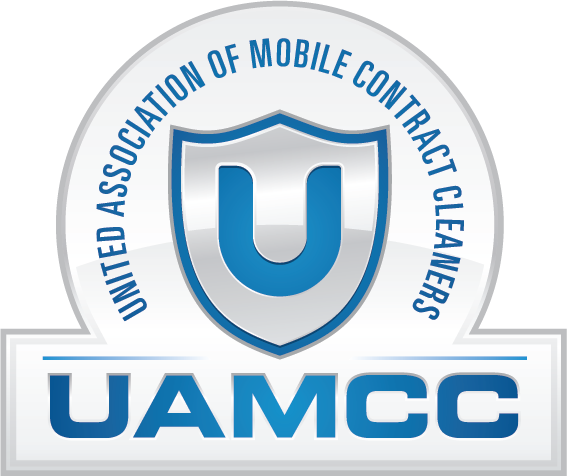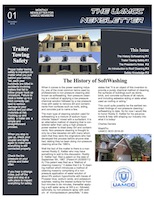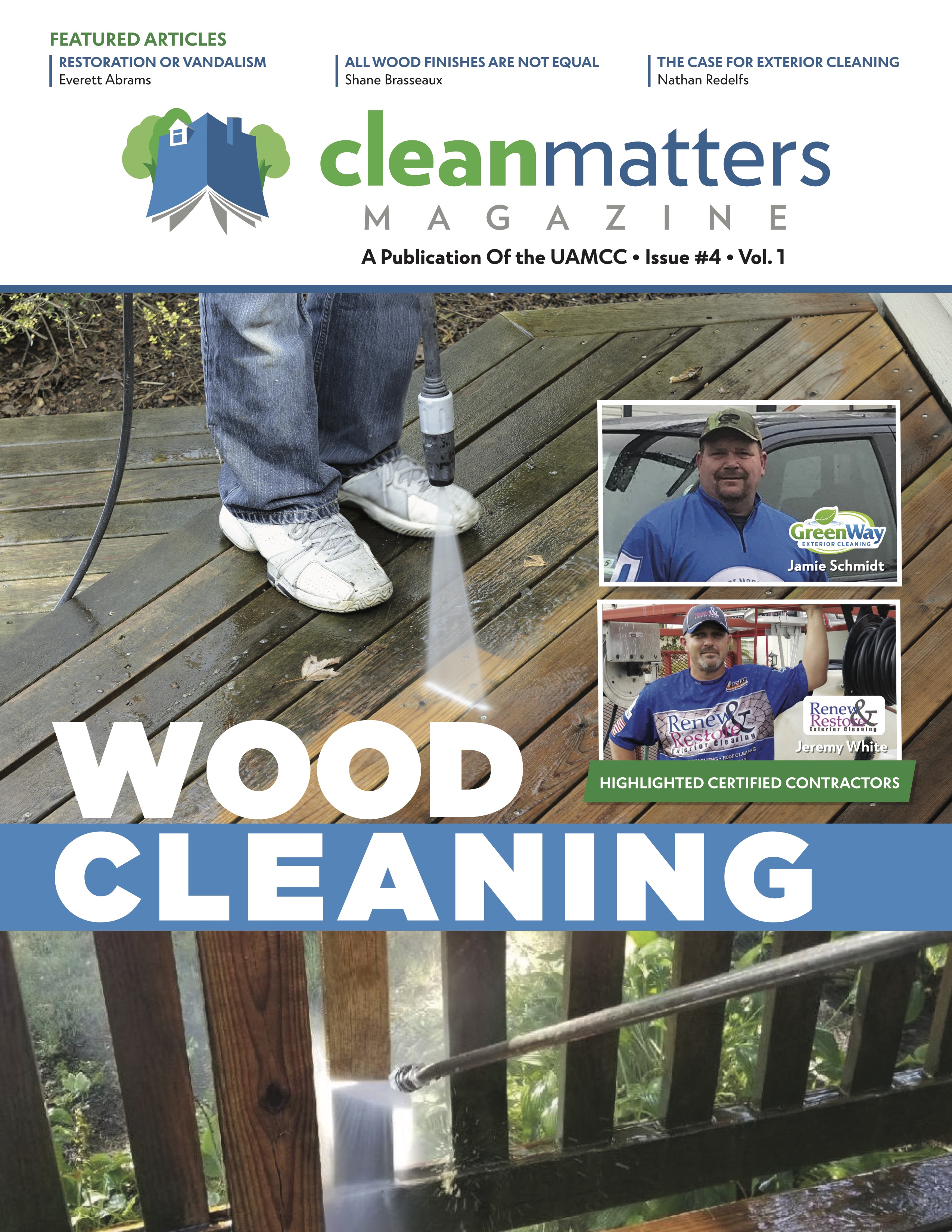ENVIRONMENTAL CONCERNS
A Contractor’s Responsibility To Be In Compliance
Most power washing activities are conducted outside. This often results in the discharge of wastewater to the storm drain, unless the equipment operator takes steps to collect and dispose of it legally. Discharge of power washing wastewater to the storm drain is prohibited because it contains pollutants from the objects or surfaces being cleaned and/or from the cleaning compounds being used. Even cleaners labeled “biodegradable” and “non-toxic” may be harmful to aquatic life, especially after cleaning various surfaces (e.g. dumpster areas, parking lots, equipment and more) that contain fats, oils, greases, chemicals (such as herbicides, insecticides, pesticides, solvents, anti-freeze and fertilizers), as well as other substances.
• Power washing wastewater that enters storm drains flows directly into lakes, rivers, and streams. This water is not treated or cleaned to remove pollutants. Pollutants discharged to the storm drain harm fish and wildlife and contaminate recreational sites and drinking water supplies.
The discharge of wastewater from power washing to the storm drain or surface waters is prohibited by law. If you provide power washing services or are considering hiring a power washer make sure your service adheres to these regulation.
However, preventing discharge to the storm drain is only part of the story. Improper discharges to the sanitary sewer, septic tanks, or land can also cause environmental harm, damage equipment and facilities, and violate regulations
Power Washing as Part of the Solution
Power washing is an activity that can help improve the quality of our waters when done properly. By cleaning (power washing) surfaces (e.g. equipment, parking lots, sidewalks, buildings, etc.), collecting the wastes (water and/or debris), and properly disposing of the wastes, there is less chance of pollutants ending up in our waterways. It is through education, proper collection and disposal that pressure washing can have a positive impact on the environment!
BEST MANAGEMENT PRACTICES
Planning
The recovery of wastewater from power washing is not difficult and is being practiced by many contractors. Modern wastewater recovery systems are small enough to be installed in trailers that are 18′ to 20′ long and they fit easily inside low ceiling parking structures.
- Prior to beginning pressure washing activities, determine what collection method you will be using and how you intend to properly dispose of the wastewater generated from each cleaning activity.
- Obtain all necessary permits and authorizations.
- Identify the specific location where you will be disposing wastewater (e.g. job-site sewer clean-out, county septage station, or the sewer clean-out at your place of business).
- Always obtain the property owner’s permission before disposing of wastewater at a job site (i.e. sanitary sewer clean-out).
Surface Pre-Cleaning
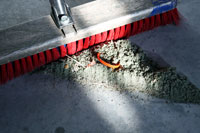 Consider using dry methods for surface pre-cleaning, such as using absorbents on small oil spots and sweeping up trash/debris/dirt/used absorbent before wet washing. Methods such as these may be used at locations such as auto repair facilities; auto parts stores, gas stations, as well as many other places. In most cases, absorbent material (e.g. kitty litter) used to pre-clean oil spots and has not become saturated may be discarded as a non-hazardous waste in the garbage receptacle. However, you should also be aware of the costs and requirements associated with disposing of pre-cleaning wastes which may be identified as hazardous waste and require special management. Note: it is important to remember, when using dry pre-cleaning methods, be sure to pick up pre-cleaning debris as soon as possible, so the materials do not have a chance to enter the storm drains.
Consider using dry methods for surface pre-cleaning, such as using absorbents on small oil spots and sweeping up trash/debris/dirt/used absorbent before wet washing. Methods such as these may be used at locations such as auto repair facilities; auto parts stores, gas stations, as well as many other places. In most cases, absorbent material (e.g. kitty litter) used to pre-clean oil spots and has not become saturated may be discarded as a non-hazardous waste in the garbage receptacle. However, you should also be aware of the costs and requirements associated with disposing of pre-cleaning wastes which may be identified as hazardous waste and require special management. Note: it is important to remember, when using dry pre-cleaning methods, be sure to pick up pre-cleaning debris as soon as possible, so the materials do not have a chance to enter the storm drains.
Power Washing
- Minimize the amount of water used during power washing activities, thus reducing the volume of wastewater that will need to be disposed.
- Avoid using cleaning products that contain hazardous substances (e.g., hydrofluoric acid, muriatic acid, sodium hydroxide, bleach, etc.) and can turn wastewater into hazardous waste.
- Acidic, caustic, and detergent cleaners may damage paved or coated surfaces.
- Strong acids and bases should be neutralized.
- Once most of the wastewater has been collected and properly disposed, minimal residual amounts of wastewater that can not be collected and that will not reach storm drains may be left on paved surfaces and allowed to evaporate. Sweeping the area may be necessary to avoid leaving behind visible solids that will be washed into the storm drain at a later time.
- Wastewater with high pollutant concentrations, including wastewater that contains cleaning compounds, must be completely collected and may not be left to evaporate.
Wastewater Collection
- Identify where all area storm drains are situated.
- Locate property high and low-spots and determine the area where wastewater can be pooled for collection. Drainage swales may sometimes be used to collect water before it enters a storm drain.
- Common equipment used for containing and collecting wastewater generated during pressure washing activities include: vacuum pumps, booms/berms, portable containment areas, weighted storm drain covers, inflatable plumber’s plugs, oil/water separators, holding tanks, portable sump pumps, hoses, absorbents, and more (see below).
- Avoid mixing non-hazardous wastewater with wastewater known to contain hazardous levels of pollutants. This may increase the volume of waste and require complicated treatment and/or disposal as a hazardous waste, thus increasing disposal costs.
- Place an oil-absorbent mat/pad on top of collected wastewater to help reduce the amount of oil re-deposited on the surface of the collection area.
- Wastewater can be filtered through an oil absorbent boom or oil/water separator and a filter to decrease the concentration of oil in the liquid and to decrease the amount of solids in the wastewater.
Once wastewater has been collected and/or discharged to the sanitary sewer system, visible solids remaining in the collection area must be swept up to prevent subsequent discharge to the storm drain.
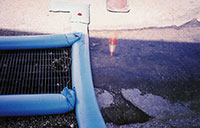 Berms– Berms may be used to prevent wastewater from entering a storm drain by placing a protective barrier around the storm drain inlet, thus allowing the wastewater to pool up around the storm drain prior to proper collection and disposal. This type of containment may be less effective or ineffective when the storm drain is located at the bottom of a slope and/or a large amount of wastewater is generated.
Berms– Berms may be used to prevent wastewater from entering a storm drain by placing a protective barrier around the storm drain inlet, thus allowing the wastewater to pool up around the storm drain prior to proper collection and disposal. This type of containment may be less effective or ineffective when the storm drain is located at the bottom of a slope and/or a large amount of wastewater is generated.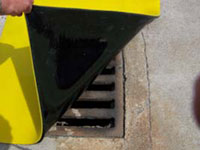 Storm Drain Covers/Mats – These devices are placed on top of the storm drain cover grate, creating a quick seal, thus preventing wastewater from entering the storm drain system. Storm drain covers/mats (magnetic vinyl mats, PVC drain covers, polyurethane mats, and others) allow wastewater to accumulate on top of it until the pressure washing activity is complete and the wastewater can be collected for proper disposal. Storm drain covers/mats are frequently used along with a vacuum device (e.g. sump pump, wet/dry vacuum, and vacuum pump).
Storm Drain Covers/Mats – These devices are placed on top of the storm drain cover grate, creating a quick seal, thus preventing wastewater from entering the storm drain system. Storm drain covers/mats (magnetic vinyl mats, PVC drain covers, polyurethane mats, and others) allow wastewater to accumulate on top of it until the pressure washing activity is complete and the wastewater can be collected for proper disposal. Storm drain covers/mats are frequently used along with a vacuum device (e.g. sump pump, wet/dry vacuum, and vacuum pump).
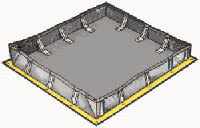 Containment Pools – A portable or temporary containment pool is another option which may be used by pressure washers to collect wastewater. Containment pools are easy to assemble, provide an immediate work area, and allow the wastewater to be collected in a manner that will prevent pollutants from entering the storm drains. Containment pools vary in size and material, and hold anything from a shopping cart to a truck and trailer.
Containment Pools – A portable or temporary containment pool is another option which may be used by pressure washers to collect wastewater. Containment pools are easy to assemble, provide an immediate work area, and allow the wastewater to be collected in a manner that will prevent pollutants from entering the storm drains. Containment pools vary in size and material, and hold anything from a shopping cart to a truck and trailer.
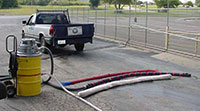 Vacuums/Pumps – Devices such as wet/dry vacuums, sump pumps, and vacuum pumps may be used to collect wastewater after pressure washing. Vacuum devices typically have an extension (vacuum boom) which allows the wastewater to be collected efficiently. In addition, many vacuum devices are designed with a second hose (e.g. garden hose) that can run from the pump to the sanitary sewer or a truck/trailer mounted holding tank, depending on disposal method.
Vacuums/Pumps – Devices such as wet/dry vacuums, sump pumps, and vacuum pumps may be used to collect wastewater after pressure washing. Vacuum devices typically have an extension (vacuum boom) which allows the wastewater to be collected efficiently. In addition, many vacuum devices are designed with a second hose (e.g. garden hose) that can run from the pump to the sanitary sewer or a truck/trailer mounted holding tank, depending on disposal method.
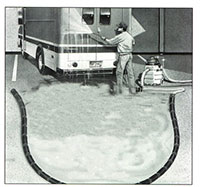
Wastewater Disposal
- Sewer Disposal – All wastewater discharged into the sanitary sewer must meet the requirements of the local sanitary district and often includes obtaining pre-approval prior to disposal whether transported to the District’s designated hauled waste disposal location, disposal to the sanitary sewer at the site of generation, disposal to the sanitary sewer at your place of business or disposal at a private treatment facility.
- Land Disposal– Wastewater may be collected and discharged or directed onto landscaped and/or dirt areas only when the wastewater does not contain contaminants (i.e. solvents, cleaners, oils, metals, etc.) that may constitute a hazardous waste, food products, or create a nuisance condition. In addition, such discharges must soak into the ground and may not flow into the storm drain. Make sure to obtain permission from the property owner prior to discharging or diverting wastewater to landscapes and/or dirt areas. If you are diverting wastewater to landscaped areas, avoid damage to plants and soil by minimizing or eliminating the use of soaps, detergents, and chemicals. Filter out any solids that would be visible on the ground after discharge. In addition, minimize the use of water to avoid wastewater overflowing from these areas. Note: repeated discharges to landscaped areas may result in an accumulation of contaminants, thus damaging vegetation and increasing contaminant levels in the soil.
